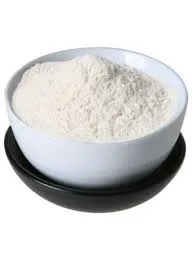
jaan. . 06, 2025 11:15 Back to list
hpmc meaning
Hydroxypropyl methylcellulose, commonly abbreviated as HPMC, is an essential additive with multifaceted applications, primarily within the pharmaceutical, construction, and food industries. This versatile polymer, derived from cellulose, is prized for its ability to form films, retain water, and enhance the stability and consistency of products.

In the pharmaceutical industry, HPMC is predominantly utilized as an excipient. Its film-forming properties contribute significantly to the controlled release of medication. As a coating agent, HPMC encapsulates the active ingredients in tablets, safeguarding them from environmental factors that might degrade their efficacy. The polymer matrix formed by HPMC ensures that drugs are released in a precise, targeted manner, improving patient compliance and medication effectiveness. Pharmacists and pharmaceutical engineers often emphasize the reliability of HPMC, as it maintains the structural integrity of tablets and capsules under various storage conditions. This reliability is further backed by numerous studies highlighting its inert nature, confirming its non-reactivity and compatibility with a vast range of pharmaceutical substances.
In construction, HPMC is revered for its role as a water retention agent and consistency enhancer, particularly in cement and mortar applications. Its ability to efficiently manage water distribution within the mix prevents premature drying and ensures optimal curing and setting times. Construction professionals appreciate HPMC for its contribution to improved workability and surface finish of materials. Many contractors endorse it, citing enhanced adhesion properties and resistance to wear and tear as notable benefits. Studies conducted on concrete and mortar mixtures highlight HPMC’s capability to reduce water uptake, thereby increasing durability and resistance to environmental stressors.

The food industry also benefits from HPMC’s unique properties. As a food additive, it functions as a thickener, emulsifier, and stabilizer, making it vital in the production of a wide array of products, from bakery items to sauces. Its non-toxic and non-allergenic nature ensures it meets stringent food safety standards. Food scientists often explore HPMC for its role in improving texture and extending the shelf life of products. Its inclusion in gluten-free recipes is especially advantageous, as it helps mimic the texture of traditional gluten-containing products, widening dietary options for those with gluten sensitivities.
hpmc meaning
From a professional perspective, the incorporation of HPMC in various industries is often backed by rigorous testing and quality assurance procedures. Technical experts frequently stress the importance of selecting high-quality HPMC to achieve the desired outcomes in product performance. Comprehensive documentation and standardized testing protocols further assure the consistency and safety of HPMC in all applications, reinforcing its status as a trustworthy and essential ingredient.
Regulatory authorities globally recognize HPMC's safety and effectiveness. In the pharmaceutical field, it is listed in the United States Pharmacopeia (USP) and the European Pharmacopoeia (EP), underlining its acceptance and widespread use. Similarly, its approval as a food additive by major health and safety organizations demonstrates its reliable safety profile.
In conclusion, Hydroxypropyl methylcellulose is a pivotal component in enhancing product quality across various sectors. Its unparalleled capabilities in modifying viscosity, stabilizing formulations, and improving product performance highlight its indispensable role. For manufacturers and consumers alike, HPMC represents a blend of reliability and functionality, continually endorsed by experts and bolstered by ongoing research. Whether enhancing the efficacy of medications, improving the performance of construction materials, or refining food textures, HPMC stands as a testament to innovation and safety in product formulation.
-
Versatile Hpmc Uses in Different Industries
NewsJun.19,2025
-
Redispersible Powder's Role in Enhancing Durability of Construction Products
NewsJun.19,2025
-
Hydroxyethyl Cellulose Applications Driving Green Industrial Processes
NewsJun.19,2025
-
Exploring Different Redispersible Polymer Powder
NewsJun.19,2025
-
Choosing the Right Mortar Bonding Agent
NewsJun.19,2025
-
Applications and Significance of China Hpmc in Modern Industries
NewsJun.19,2025







